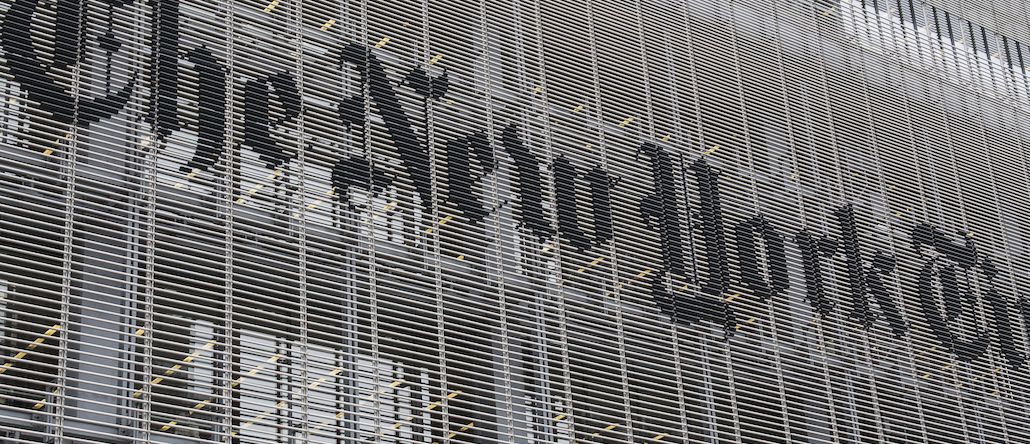
Among traditional publishing companies, few have the journalistic heft of The New York Times. The 163-year-old institution has long had a strong moat around its newsroom to protect its journalistic integrity from business influences.
So one of the more interesting nuggets to come out of Digiday’s profile on The New York Times’ Meredith Kopit Levien (see full story here) was that the Times invites ad buyers to attend the storied daily Page One meeting, where editors decide what will go on the front page of the next day’s paper. Buyers have responded positively to the idea, which seems to go along with a greater willingness in general by the Times to let advertisers have contact with the editorial side.
Ben Winkler, chief digital officer at OMD, said that one of the first things Levien said to him upon joining the Times in 2013 was to invite him to attend a Page One meeting. “Talk about native advertising,” Winkler said. “To get behind the wall and see how the sausage has been made, that’s pretty special.”
The Times said it has a long history of having not just advertisers but various types of outsiders attend its Page One meetings as observers. (They are not to give input.) Stories of more advertisers visiting lately could be the function of a more aggressive sales team, a Times rep said.
There’s a trend toward newsrooms opening their Page One meetings to the public, which could include advertisers, to appear more transparent and help people understand the process, said Tom Rosenstiel, executive director of the American Press Institute and a longtime observer of news ethics. Two prominent examples are the former McClatchy newspaper chain and CBS News.
In addition to bringing people into the process, opening up the Page One meetings improves the quality of the events, which could otherwise have a tendency to have participants “sucking up to the main decision-maker,” Rosenstiel said. On the other hand, he said, “If it’s done in way that only special advertising people get in and not everyone, that’s a little more peculiar.”
Digiday did some checking, and the practice is less common at other traditional news organizations. The Wall Street Journal doesn’t open its meetings to advertisers (only occasionally student groups and visiting reporters). The Washington Post opens the meeting to newsroom guests, and only very rarely, ad clients. The New York Daily News doesn’t open its meeting to any outsiders. Executives at Time Inc. said they are unaware of any clients or advertisers sitting in on editorial meetings.
“We often talk about how we approach editorial and distribution, but I can’t think of any instance in which we had clients sit in on actual meetings,” said Business Insider editor-in-chief Henry Blodget.
The same is true at International Business Times, said Peter Goodman, global editor-in-chief.
“We have no interaction with agencies or clients within the confines of our newsroom,” he said. “We have a very traditional church-state division, and we see this as crucial to preserve our integrity and our relationship with readers. We believe that journalists have to do their jobs free of commercial interests, and that’s actually best for the business side: If we are given the freedom to produce the most compelling, hard-hitting journalism we can, absent any conflicts of interests, we will win readers and the business side will have something powerful to sell.”
Image courtesy of Victor Maschek / Shutterstock.com
More in Media

Media Briefing: The top trends in the media industry for 2025
This week’s Media Briefing takes a look at the top trends from 2025, from digital advertising revenue performance to AI licensing deals.

Digiday Scorecard: Publishers rate Big Tech’s AI licensing deals
Digiday has compiled a scorecard grading AI platforms to make sense of the growing number of players in the AI content licensing market.

Publishers are hunting for AI prompt data — now they’re starting to get it from third-party companies
Publishers are finally gaining some visibility into AI search, as new prompt data tools crack open a black box.





